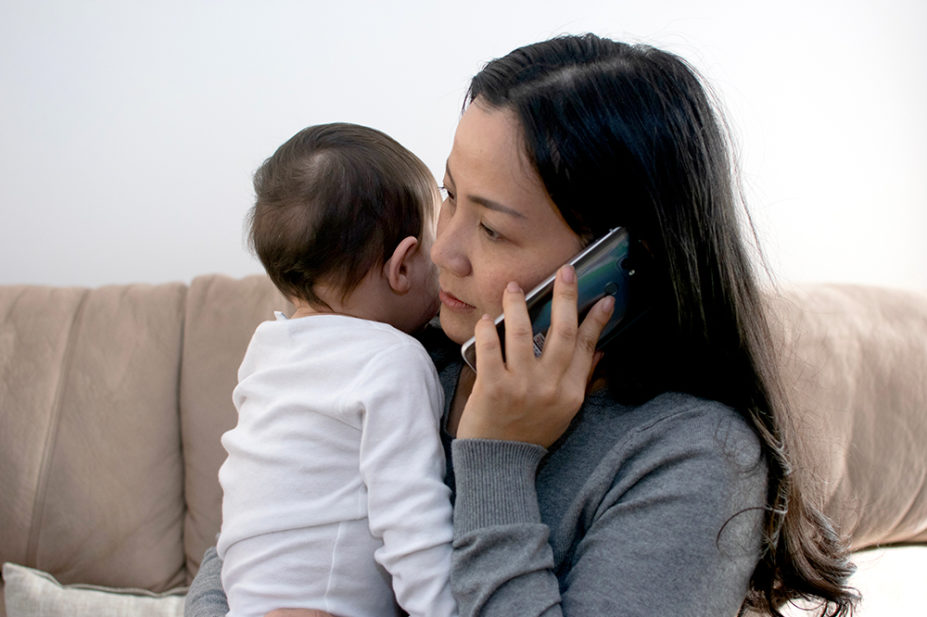
Shutterstock.com
“The patient’s experience does not end when they walk out of that door.”
These were the powerful words of patient Andrew Taylor, published in the November 2020 issue of The Pharmaceutical Journal (2020;305[7943]:314–315), as he implored healthcare professionals to “strive to see the human inside the patient” — a real person who lives and breathes outside the four walls of our clinics, hospitals and pharmacies.
How do we know how a patient is coping with their medicines once they have left our care? How do we know that they are using their medicines safely at home?
We have to ask. And not least for our infant, children and young adult patients, and their families. Medicines use in this patient group has long been known to be challenging, and many families continue to struggle to use medicines safely at home. But a collaborative approach between healthcare professionals and families can remedy this.
Children’s medicine errors
For all healthcare professionals, ensuring the safe use of medicines should be a top priority, since medicine errors are the leading cause of preventable harm in healthcare across the world[1]. Each year, in England alone, harm associated with medication errors is estimated to cost the NHS an extra £100m, and result in 180,000 extra hospital bed days[2]. And there are significant costs to individual patients and their families — not limited to more visits to their healthcare providers, negative effects on their mental health and poor health outcomes overall[2].
The scale of medication errors in children is difficult to estimate, but it has been shown that infants, children and young adults are one of the patient groups at highest risk of these errors. Patients aged under 18 years are twice as likely to experience a medication error compared with adults[3]. And recent studies have shown that as many as nine out of ten families will use a medicine incorrectly at home at some point[4].
Under-reporting of patient safety incidents at home, including medication errors, presents a big problem to our understanding of the scale of this issue. A review of data from the National Reporting and Learning System, recorded between 2005 and 2013, found a total of 674 medication-related incidents described in the home (for example, from NHS 111 calls), general practice and community pharmacy settings[5]. This is despite the fact that an estimated 46 million medicines are prescribed for patients aged under 16 years each year[6].
We suspect a significant number of errors — and subsequent harm — is being missed by the conventional methods of reporting patient safety incidents.
What is happening at home?
To identify these hidden errors, and to understand why they may be occurring, we need to understand the experiences of families.
Research shows that families experience significant burden from the responsibility of caring for a sick child at home[7]. In a UK study involving 11 in-depth interviews with the families of children who require specialist medical procedures at home, parents reported that providing care, such as medicines administration, takes up a great deal of their time, and can be physically and emotionally demanding[7]. Parents reported feeling exhausted, and they were concerned about the dangers of performing medical tasks when they were so tired[7].
Further studies have explored the experiences of families through interviews with family cohorts and individual case reports, and by investigating internet forums[8–10]. These studies showed that many families experience medication errors at home, as well as the many challenges that families face, which may be contributing to errors[9].
Challenges included: age-inappropriate formulations; the timing of doses outside of waking hours; difficulty in measuring doses; use of unlicensed medicines; and inadequacy of medicines information[8].
These studies encompassed a broad range of family demographics and types of medicines used, so we should appreciate that any family, using any medicine, will be susceptible to experiencing a medication error when using medicines at home.
Preventing is better than reacting
Several initiatives, at both a national and international level, are seeking to address the scale of medication errors in healthcare. In 2017, the World Health Organization launched its Medicines Without Harm strategy, and in 2019, the NHS launched a Medication Safety Improvement Programme as part of the wider NHS Patient Safety Strategy[1,11]. Part of this work is acknowledging that our existing methods for improving patient safety can only go so far — we need new methods to drive further improvements.
And these improvements will harness the experiences of patients and their families in supporting the safety of their own care[12]. Evidence is accumulating that we can address medicines safety issues with the NHS Patient Safety Strategy’s three-pronged approach:
- Insight: patients and their families can provide insight into the range and scale of safety problems. We can improve our understanding of safety by drawing intelligence from multiple sources of patient safety information;
- Involve: patients and their families can be involved in efforts to reduce errors happening. We can equip patients, staff and partners with the skills and opportunities to do this;
- Improve: with families’ feedback, we can design and support programmes that deliver effective and sustainable change in the most important areas[13–15].
Adapting successful interventions
To this end, projects to support certain patient groups and their families are well under way in the UK. The National Institute for Health Research (NIHR) Yorkshire and Humber Patient Safety Translational Research Centre is working on interventions designed to support older patients and their families in managing their medications, with a view to reducing error.
For example, the Partners at Care Transitions programme is currently testing an intervention designed to support older people to practise skills they will need once they are discharged[16]. This intervention primarily comprises a patient-facing booklet, given to patients while they are still in hospital, which encourages them to ask questions about their care, condition and medications; this practice will help patients and their families to undertake these activities more successfully once they get home[15–18].
Another example is the Improving the Safety and Continuity Of Medicines Management at Transitions of Care intervention[19]. This intervention, currently being tested in a large randomised controlled trial, specifically aims to support older patients with heart failure, following discharge from hospital with their complex medication needs.
We believe that the positive evidence emerging from these projects suggests that similar interventions should be designed for the needs of children and their families too.
Pharmacy professionals alone cannot solve the problem of medication errors at home — reducing errors requires a team effort, involving multiple stakeholders — but we believe that the profession should do more to involve patients and their families in their care. These key stakeholders are invaluable in gaining insight into, and making improvements to, medication safety at home.
First, we must recognise patients and families’ crucial role in managing medications at home and reporting errors. Second, we must listen to their experiences and problems with managing medications at home. And third, we must work with them to design and test potential solutions to these problems — if an intervention is by them, it is for them.
Stephen Morris, pharmacist, Leeds Teaching Hospitals NHS Trust. Morris (NIHR Integrated Clinical Academic Pre-Doctoral Clinical Fellowship) is funded by Health Education England and the NIHR.
Jane O’Hara, professor of healthcare quality and safety, School of Healthcare, University of Leeds. O’Hara is supported by the NIHR Yorkshire and Humber Patient Safety Translational Research Centre.
- 1The third WHO Global Patient Safety Challenge: Medication Without Harm. World Health Organization. https://www.who.int/patientsafety/medication-safety/en/ (accessed Feb 2021).
- 2Prevalence and Economic Burden of Medication Errors in The NHS in England. Rapid evidence synthesis and economic analysis of the prevalence and burden of medication error in the UK. Policy Research Unit in Economic Evaluation of Health and Care Interventions. EEPRU. 2018.http://www.eepru.org.uk/article/prevalence-and-economic-burden-of-medication-errors-in-the-nhs-in-england/ (accessed Feb 2021).
- 3Paediatric medication error: A systematic review of the extent and nature of the problem in the UK and international interventions to address it. Social Science Research Unit. 2014.https://eppi.ioe.ac.uk/cms/Portals/0/PDF%20reviews%20and%20summaries/Paediatric%20medication%20error%202014%20Sutcliffe%20report.pdf?ver=2014-11-20-161504-377
- 4Parand A, Garfield S, Vincent C, et al. Carers’ Medication Administration Errors in the Domiciliary Setting: A Systematic Review. PLoS ONE 2016;11:e0167204. doi:10.1371/journal.pone.0167204
- 5Rees P, Edwards A, Powell C, et al. Patient Safety Incidents Involving Sick Children in Primary Care in England and Wales: A Mixed Methods Analysis. PLoS Med 2017;14:e1002217. doi:10.1371/journal.pmed.1002217
- 6Prescriptions Dispensed in the Community – Statistics for England, 2006-2016. NHS Digital. 2017.https://digital.nhs.uk/data-and-information/publications/statistical/prescriptions-dispensed-in-the-community/prescriptions-dispensed-in-the-community-statistics-for-england-2006-2016-pas (accessed Feb 2021).
- 7Page BF, Hinton L, Harrop E, et al. The challenges of caring for children who require complex medical care at home: ‘The go between for everyone is the parent and as the parent that’s an awful lot of responsibility’. Health Expect 2020;23:1144–54. doi:10.1111/hex.13092
- 8Aston J, Wilson KA, Terry DRP. The treatment-related experiences of parents, children and young people with regular prescribed medication. Int J Clin Pharm 2018;41:113–21. doi:10.1007/s11096-018-0756-z
- 9Jubraj B, Blair M. Use of a medication passport in a disabled child seen across many care settings. Case Reports 2015;2015:bcr2014208033–bcr2014208033. doi:10.1136/bcr-2014-208033
- 10Bergene EH, Rø TB, Steinsbekk A. Strategies parents use to give children oral medicine: a qualitative study of online discussion forums. Scandinavian Journal of Primary Health Care 2017;35:221–8. doi:10.1080/02813432.2017.1333308
- 11The NHS Patient Safety Strategy: Safer culture, safer systems, safer patients. NHS Improvement. 2019.https://improvement.nhs.uk/documents/5472/190708_Patient_Safety_Strategy_for_website_v4.pdf (accessed Feb 2021).
- 12Improving care by using patient feedback. National Institute for Health Research. 2019.https://content.nihr.ac.uk/nihrdc/themedreview-04327-PE/Patient-Feedback-WEB.pdf (accessed Feb 2021).
- 13Lawton R, O’Hara JK, Sheard L, et al. Can patient involvement improve patient safety? A cluster randomised control trial of the Patient Reporting and Action for a Safe Environment (PRASE) intervention. BMJ Qual Saf 2017;26:622–31. doi:10.1136/bmjqs-2016-005570
- 14O’Hara JK, Reynolds C, Moore S, et al. What can patients tell us about the quality and safety of hospital care? Findings from a UK multicentre survey study. BMJ Qual Saf 2018;27:673–82. doi:10.1136/bmjqs-2017-006974
- 15Louch G, Mohammed MA, Hughes L, et al. “Change is what can actually make the tough times better”: A patient-centred patient safety intervention delivered in collaboration with hospital volunteers. Health Expect 2018;22:102–13. doi:10.1111/hex.12835
- 16Baxter R, Murray J, et al. Improving patient experience and safety at transitions of care through the Your Care Needs You (YCNY) intervention: a study protocol for a cluster randomised controlled feasibility trial. Pilot Feasibility Stud 2020;6. doi:10.1186/s40814-020-00655-5
- 17O’Hara JK, Baxter R, Hardicre N. ‘Handing over to the patient’: A FRAM analysis of transitional care combining multiple stakeholder perspectives. Applied Ergonomics 2020;85:103060. doi:10.1016/j.apergo.2020.103060
- 18O’Hara JK, Aase K, Waring J. Scaffolding our systems? Patients and families ‘reaching in’ as a source of healthcare resilience. BMJ Qual Saf 2018;28:3–6. doi:10.1136/bmjqs-2018-008216
- 19Powell C, Breen L, Fylan B, et al. Improving the Safety and Continuity Of Medicines management at Transitions of care (ISCOMAT): protocol for a process evaluation of a cluster randomised control trial. BMJ Open 2020;10:e040493. doi:10.1136/bmjopen-2020-040493


